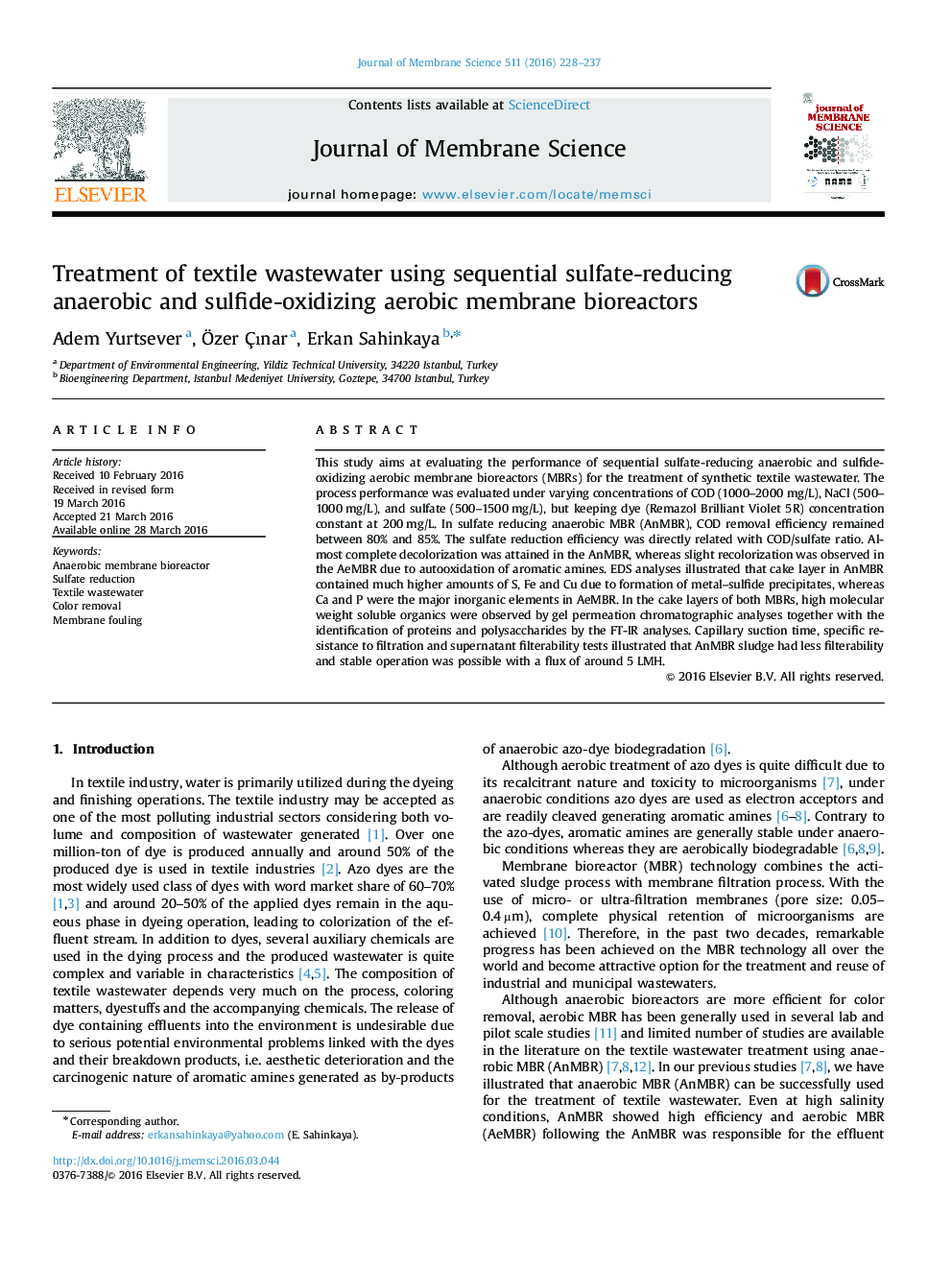| کد مقاله | کد نشریه | سال انتشار | مقاله انگلیسی | نسخه تمام متن |
|---|---|---|---|---|
| 632420 | 1455988 | 2016 | 10 صفحه PDF | دانلود رایگان |
عنوان انگلیسی مقاله ISI
Treatment of textile wastewater using sequential sulfate-reducing anaerobic and sulfide-oxidizing aerobic membrane bioreactors
ترجمه فارسی عنوان
درمان با پساب های نساجی با استفاده از بیوراکتورهای غشایی هوازی با سولفات کاهش بی هوازی و سولفید سولفات
دانلود مقاله + سفارش ترجمه
دانلود مقاله ISI انگلیسی
رایگان برای ایرانیان
کلمات کلیدی
بیوراکتور غشایی بی هوازی، کاهش سولفات، فاضلاب نساجی، حذف رنگ، فوران غشاء،
موضوعات مرتبط
مهندسی و علوم پایه
مهندسی شیمی
تصفیه و جداسازی
چکیده انگلیسی
This study aims at evaluating the performance of sequential sulfate-reducing anaerobic and sulfide-oxidizing aerobic membrane bioreactors (MBRs) for the treatment of synthetic textile wastewater. The process performance was evaluated under varying concentrations of COD (1000-2000Â mg/L), NaCl (500-1000Â mg/L), and sulfate (500-1500Â mg/L), but keeping dye (Remazol Brilliant Violet 5R) concentration constant at 200Â mg/L. In sulfate reducing anaerobic MBR (AnMBR), COD removal efficiency remained between 80% and 85%. The sulfate reduction efficiency was directly related with COD/sulfate ratio. Almost complete decolorization was attained in the AnMBR, whereas slight recolorization was observed in the AeMBR due to autooxidation of aromatic amines. EDS analyses illustrated that cake layer in AnMBR contained much higher amounts of S, Fe and Cu due to formation of metal-sulfide precipitates, whereas Ca and P were the major inorganic elements in AeMBR. In the cake layers of both MBRs, high molecular weight soluble organics were observed by gel permeation chromatographic analyses together with the identification of proteins and polysaccharides by the FT-IR analyses. Capillary suction time, specific resistance to filtration and supernatant filterability tests illustrated that AnMBR sludge had less filterability and stable operation was possible with a flux of around 5Â LMH.
ناشر
Database: Elsevier - ScienceDirect (ساینس دایرکت)
Journal: Journal of Membrane Science - Volume 511, 1 August 2016, Pages 228-237
Journal: Journal of Membrane Science - Volume 511, 1 August 2016, Pages 228-237
نویسندگان
Adem Yurtsever, Ãzer Ãınar, Erkan Sahinkaya,
